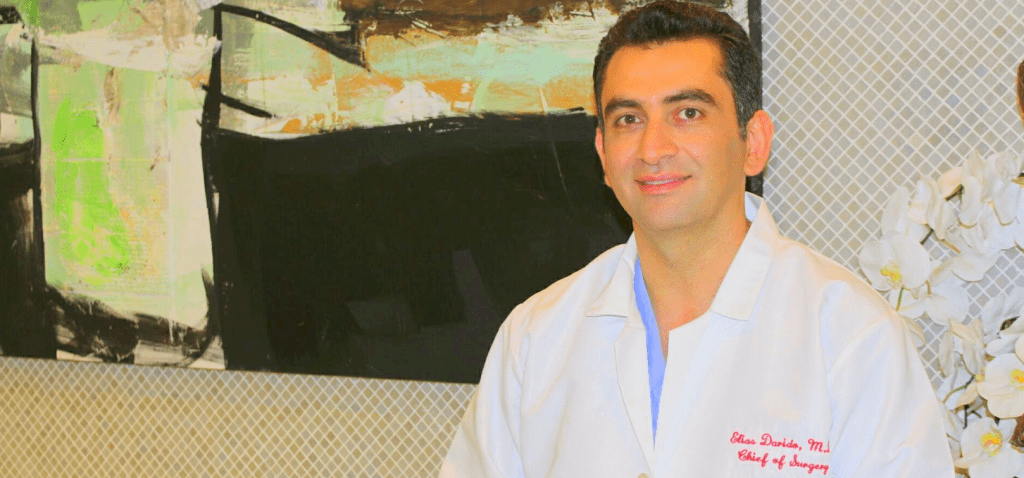The patient is a 50 year-old female who underwent gastric sleeve surgery in Mexico approximately a year ago. Her comorbidities prior to surgery included hypertension and sleep apnea. She did not experience heartburn or food regurgitation prior to surgery. She underwent the procedure with no complications. Her operative report describes an uneventful gastric sleeve resection and anterior hiatal hernia repair consisting of anterior crural approximation with suture fixation of the gastric sleeve to the left crus. 12 days after surgery she started experiencing severe daily heartburn and food regurgitation. She was placed on proton pump inhibiters, Carafate and Zantac with very little symptom improvement. She underwent an upper endoscopy that showed a Hill grade 4 hiatal hernia with around 6 cm axial displacement and 4 to 5 cm diaphragmatic opening. The incisura angularis was widely open with no apparent narrowing.
Decision was made to explore the patient and repair the hiatal hernia and possibly convert the gastric sleeve to Roux en Y gastric bypass. Laparoscopic abdominal exploration revealed a large hiatal defect with gastric sleeve herniation into the mediastinum. There were anterior adhesions suggestive of previous anterior crural repair and lateral stitches between the gastric sleeve and left crus suggestive of an attempt at fixating the sleeve below the diaphragm. The gastric sleeve showed no evidence of twisting or narrowing. The gastric fundus was completely resected.
Given the fact that the patient had such a large hiatal defect and no gastric sleeve luminal narrowing, decision was made to preserve the sleeve and repair the hiatal hernia. The hiatus was opened. The gastric sleeve was reduced into the abdomen and the esophagus circumferentially dissected up until 3 to 4 cm of intra-abdominal esophagus was obtained. At this point, the right and left crus were approximated with pledgeted sutures and covered with mesh to reinforce the repair.
Postoperatively the patient did very well. Her heartburn and food regurgitation have completely resolved. She was free of proton pump inhibitors. Her sleep quality greatly improved and she resumed her normal activity within a week after surgery.
Hiatal hernia repair is not about crural approximation. The key to hiatal hernia repair is esophageal dissection and mobilization to restore the intra-abdominal esophagus. The GEJ is a complex anatomic structure that is closely linked to proper functioning of the antacid barrier. Effacement of the angle of Hiss, loss of the diaphragmatic support, and migration of the intra-abdominal esophagus into the negative pressure chest area are some of the factors that contribute to disruption of the GEJ anatomy and function as antacid barrier. Reducing the stomach into the abdominal cavity without dissecting the hernia sac and mobilizing the esophagus is a useless move. Attempting to fixate the stomach to the crura is equally futile. Esophagus, GEJ and stomach must be completely freed from the chest into the abdomen with no tension to ensure success and durability of the repair. Our patient had no GERD related symptoms prior to her sleeve surgery. The angle of Hiss and GEJ anatomy needed to insure proper functioning of the antacid barrier was most likely preserved within the hernia sac in the chest. I have noticed this finding in several patients with fairly large hiatal hernias but they have no reflux. Following gastric sleeve resection and anterior crural repair in Mexico, the patient started developing symptoms. The antacid barrier that has reformed in the chest, within the hernia sac, was disrupted. By properly repairing the hiatal hernia and reducing the sleeve into the abdominal cavity and restoring the abdominal portion of the esophagus, GERD has resolved. This raises an important question that has not been answered yet in the literature. Is hiatal hernia repair with gastric sleeve surgery equivalent to hiatal hernia repair with Nissen fundoplication? In other words, is a properly performed gastric sleeve surgery equivalent to a Nissen procedure in the setting of hiatal hernia and GERD? More studies are needed in the future to answer this common problem affecting obese and overweight patients in the H city.

